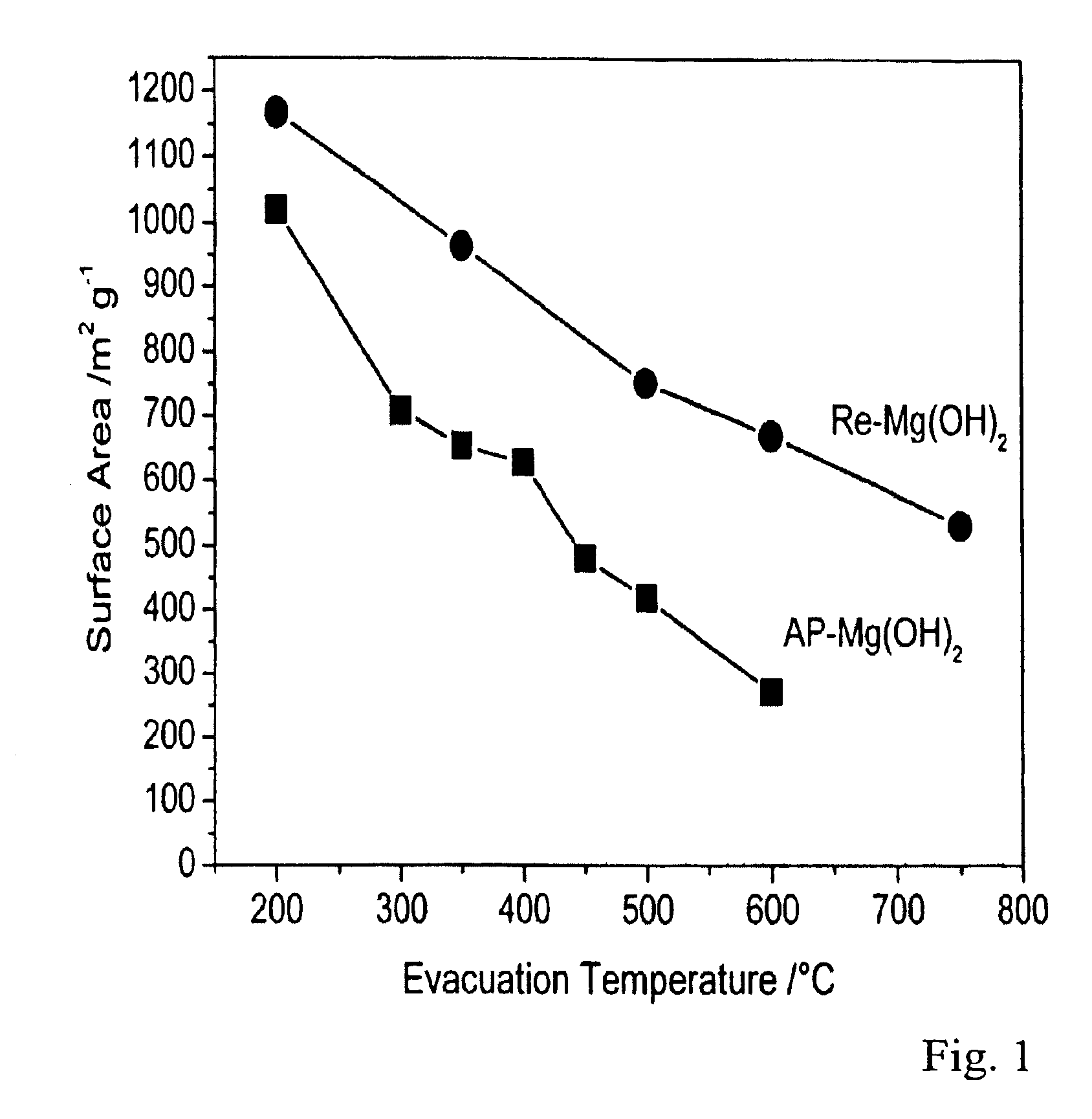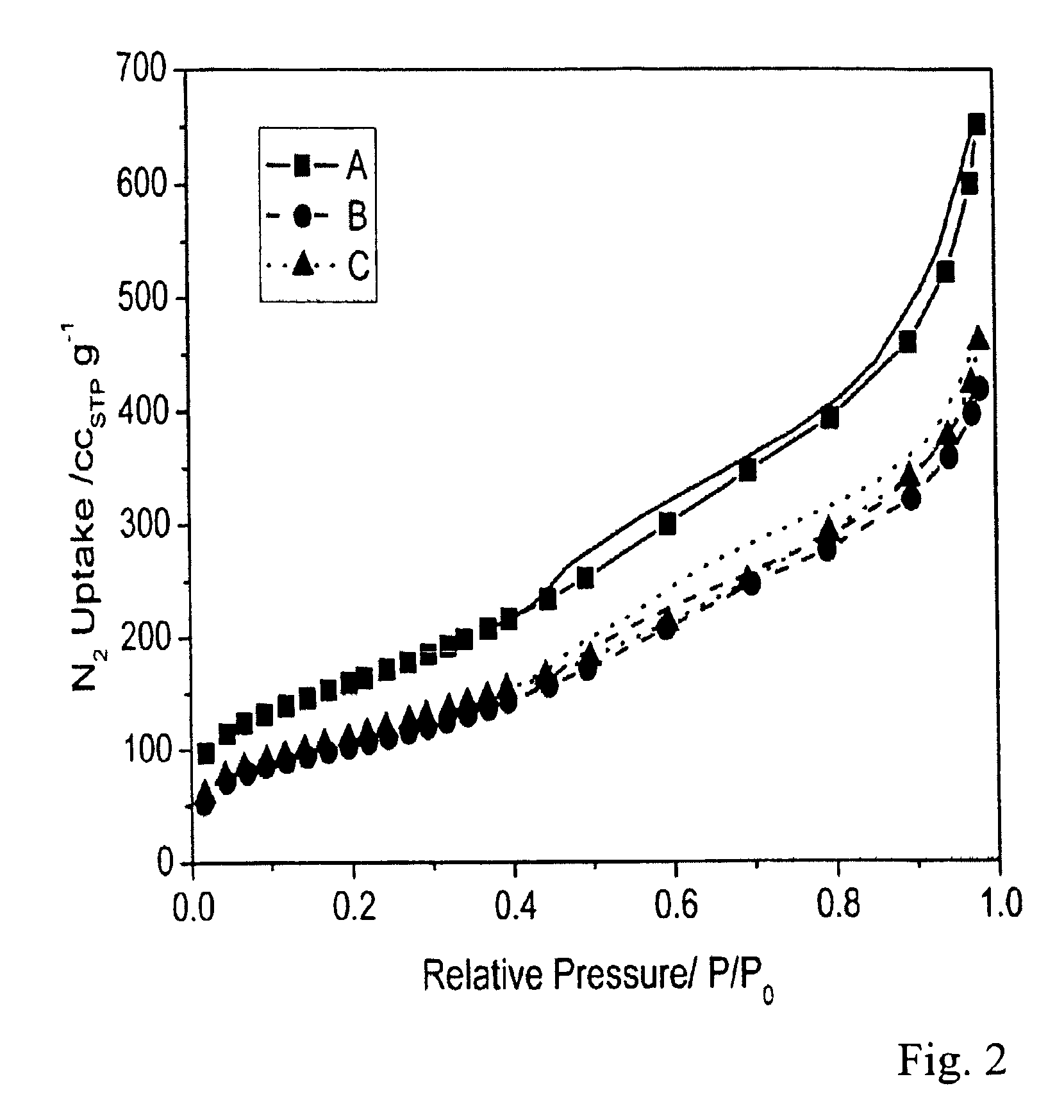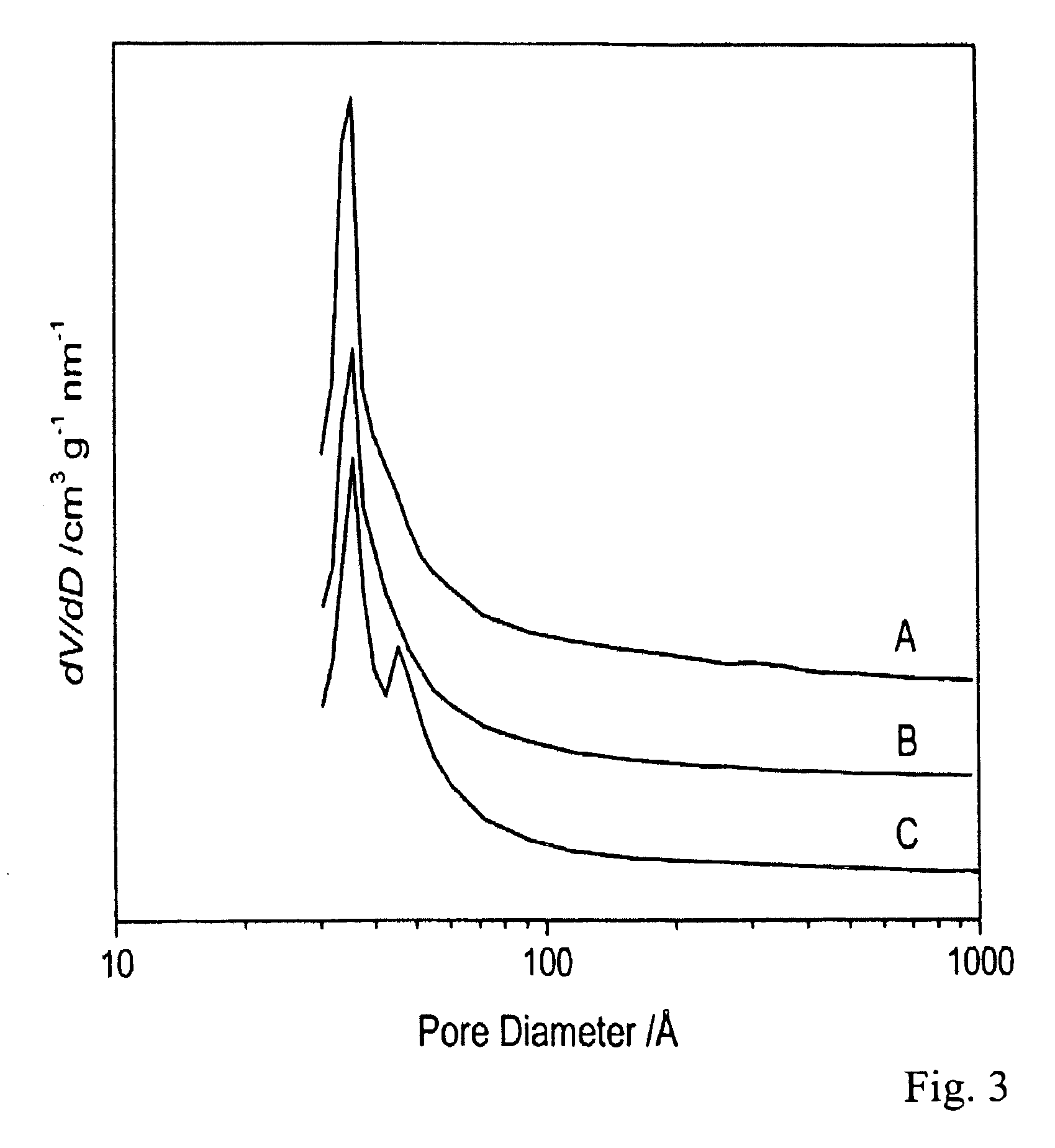Carbon-coated metal oxide nanoparticles
a technology of carbon-coated metal oxides and nanoparticles, which is applied in the field of composites, can solve the problems of reducing the efficiency of destructive adsorbents and limited use of nanocrystalline metal oxides, and achieve the effect of effective airborne decontamination of chemicals
- Summary
- Abstract
- Description
- Claims
- Application Information
AI Technical Summary
Benefits of technology
Problems solved by technology
Method used
Image
Examples
example i
Synthesis of Modified Mg(OH)2 Aerogels
Magnesium methoxide was prepared by dissolving Mg metal ribbon (Fisher) in methanol. A 1 M solution was prepared by the reaction of 4.86 g (0.20 mol) Mg with 206 ml methanol under nitrogen flow at room temperature. After completion of the reaction, the reaction vessel was sealed and stored at room temperature for future use in the synthesis of Mg(OH)2 aerogels.
For preparation of modified MgO aerogels, magnesium methoxide solution obtained via the first step was diluted with a desired amount of methanol and / or other solvent (e.g., toluene). Organic modifying agents and hydrolysis water were dissolved in 10 ml methanol each. Then, the solution of the first modifying agent was quickly poured into the reaction vessel with magnesium methoxide, and the resulting mixture was stirred for 10 min. If two modifying agents were used, the second one was added following a similar procedure. Finally, a stoichiometric amount of hydrolysis water dissolved in met...
example ii
Synthesis of AP-MgO and Carbon-Coated MgO Nanocrystals
AP-Mg(OH)2 was synthesized by a procedure similar to that outlined in Example I without adding any organic modifiers to the magnesium methoxide solution in a toluene-methanol mixture. The material obtained after supercritical drying at 265° C. was subjected to thermal treatment under vacuum at 500° C. to give AP-MgO. A detailed synthesis procedure is set forth in Klabunde et al., J. Phys. Chem., 1996, 100, 12142, incorporated by reference herein.
For synthesis of Mg(OH)2 modified with resorcinol, 20 ml of 1M Mg(OCH3)2 solution in methanol was mixed with 60 ml toluene in a 250 ml round-bottom flask maintained under flowing nitrogen. Next, 0.33 g (0.0030 mol) resorcinol was dissolved in 10 ml methanol in a beaker, and then 0.72 ml (0.040 mol) H2O was dissolved in 10 ml methanol in another beaker. The total volume of the solvents was 100 ml, with the toluene / methanol ratio being 1.5. All solutions were homogenized by stirring with ma...
PUM
| Property | Measurement | Unit |
|---|---|---|
| Temperature | aaaaa | aaaaa |
| Temperature | aaaaa | aaaaa |
| Temperature | aaaaa | aaaaa |
Abstract
Description
Claims
Application Information
 Login to View More
Login to View More - R&D
- Intellectual Property
- Life Sciences
- Materials
- Tech Scout
- Unparalleled Data Quality
- Higher Quality Content
- 60% Fewer Hallucinations
Browse by: Latest US Patents, China's latest patents, Technical Efficacy Thesaurus, Application Domain, Technology Topic, Popular Technical Reports.
© 2025 PatSnap. All rights reserved.Legal|Privacy policy|Modern Slavery Act Transparency Statement|Sitemap|About US| Contact US: help@patsnap.com



